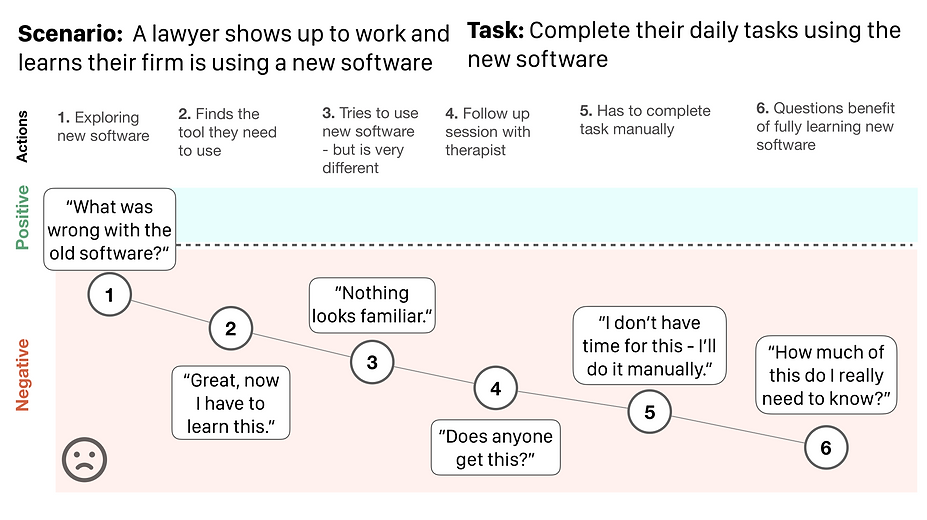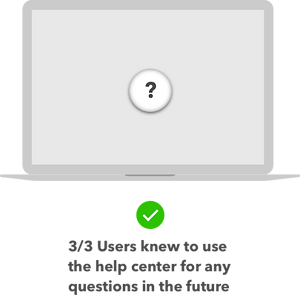
Onboarding Process
Native Desktop App
Consultant: Legal-Tech Start-up
Overview
During a two week sprint our team conducted user research and designed a simple onboarding process for a legal tech startup.
Team
Luke Jenkins
Michael Reiss
Nicole So
Methods
User Interviews, Affinity Mapping, Persona Creation, Journey Mapping, Design Studio, Sketching, Wireframes, Iterative Testing, Rapid Prototyping, Usability Testing
Tools
Figma
Role
UI Designer
UX Designer
UX Researcher
INITIAL PROBLEM
The legal space has been slow to adapt to changing technology. And lawyers are resistant to new software. Our client’s mission is to free legal teams from menial tasks so they can apply their intelligence to critical matters.
GOAL
Our goal was to aid our client in developing the early stages of a knowledge management platform’s dashboard using research-backed design decisions.
Research & Synthesis
To begin the sprint we conducted remote interviews with several legal professionals who covered a broad demographic range in terms of seniority and practical experience. Our team then used an affinity map to synthesize the information and distill several key insights that would inform our decisions during the design process, including the persona creation, journey mapping, problem statement, and solution.
User Interviews
Interviewed 4 Legal Professionals:
Range of Seniority Levels
Mid- to Large-size firms
Corporate, Government, In-House
Insights
Lawyers are pressed for time
Lawyers want simplicity and familiarity when using legal tools
Lawyers don’t like when new software is introduced and feel it isn’t tailored to their needs
Persona Creation

Journey Mapping

Problem Statement
How might we create a simple and effective process to help lawyers learn the platform, so that they continue using it?
Proposed solution
A quick, simple onboarding process with options to learn the software at any time
Design
After determining that the onboarding process would be the best way to incorporate the benefits of the UX process for our client, we led a design studio with them to begin fleshing out some ideas. The team then translated the initial designs into paper wireframes for testing. Results were then incorporated and tested on a mid-fidelity prototype. And in the final iteration of the sprint, a higher fidelity mid-fi prototype was used to test the design and the memorability of the onboarding process.
Mid-fi Wireframes
The final iteration was based on an existing service's dashboard modified to fit the client's anticipated needs to increase realism for users during testing. This was done to ensure that the feedback on the memorability task was accurate. The revised mid-fidelity was tested on 3 users.
Welcome Modal
Guided Walkthrough Screen
Home Dashboard with Tip Notification



USABILITY Testing



Reflections & next steps
Our team encountered several challenges over the course of this sprint, including several pivots, but what has become especially clear is the value of an iterative UX process and relying on research-backed design decisions. By constantly iterating and basing each next step in our process on the information we uncovered through our research ant testing - we were successfully pivoted and saved our client valuable time and money.
“You have us thinking about an important part of the platform a lot earlier than we would have.”
-
Conduct tool specific research
-
Conduct additional research to aid in memorability of onboarding process
-
Continue testing with tool specific on-boarding